How To: Plank
3 Golden Rules (Made Better!)
Today we’re going to go over the 3 golden rules for one of the best exercises to strengthen your core, and that is the PLANK. As always, we’re going to not only talk about proper form, but how to make this exercise even BETTER, so you can progress with the movement and make gains, whether you’re a beginner or an advanced athlete.
Golden Rule #1: Keep Your Body Straight
This may come off as self-explanatory, however, there are some things that happen if you’re not paying attention. Proper form for a plank looks like this – your body is straight, your shoulders are neutral, and you stay in this position.
But what tends to happen when you start to fatigue, either in your core or in your shoulders, is you’ll start to let your hips rise and put your butt in the air (which really isn’t that big of a deal, aside from the fact that it’s not placing as much tension on your core).
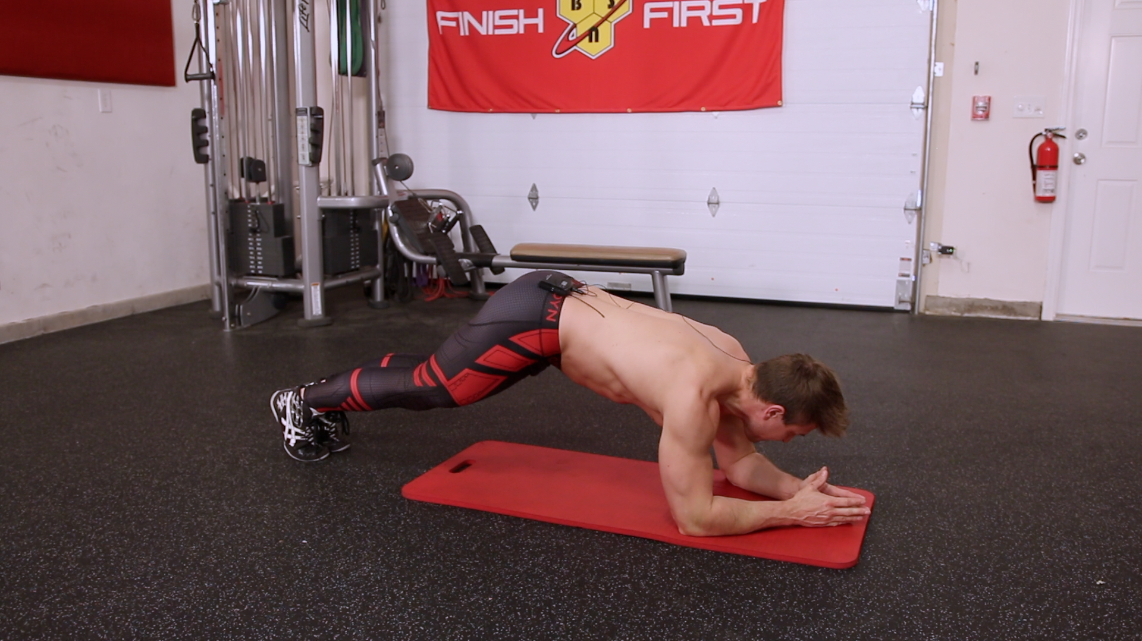
But when you start to do a banana body, and you let your hips sag, this is where you start having some problems. What happens when you let your hips sag (or your hyper-extend your hips) is you’re disengaging your core, and you’re putting a lot of pressure in your lower back. The entire point of this exercise is to STRENGTHEN the core. If you’re disengaging it by lowering your hips, then you should stop doing the movement because at that point you’re just wasting your time.
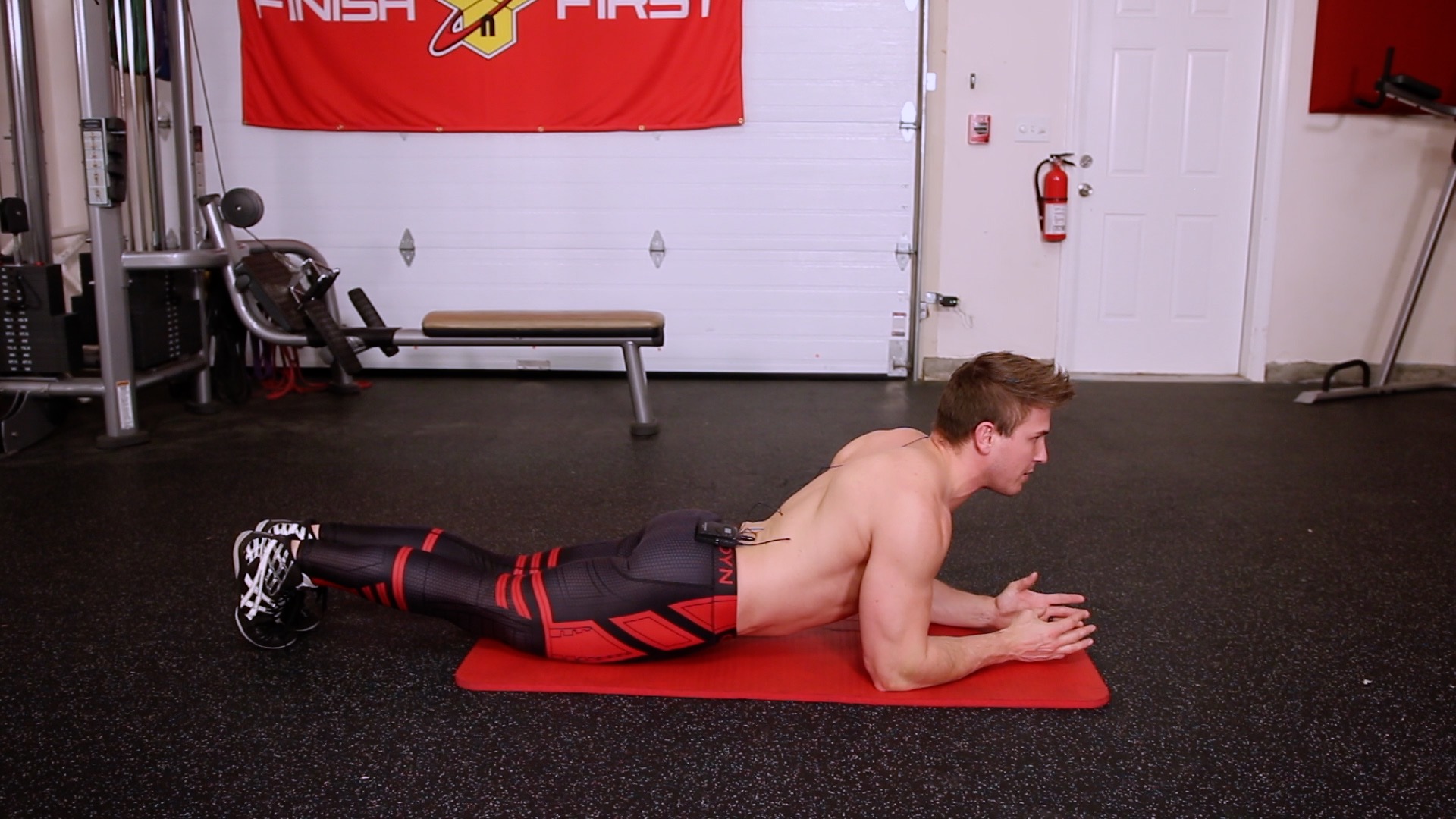
Golden Rule #2: Quality Over Quantity
Obviously with any exercise you always want to have quality repetitions, but that’s ESPECIALLY as important when it comes to the plank, for some of the reasons we just mentioned in golden rule number one. Visually, proper form for a plank just looks like you are holding your body in a straight line, but there’s a lot more going on IN the body than what it looks like from the outside.
When you’re in the plank position, you’re not just trying to hold your body straight, you’re actually flexing your glutes as hard as you can, you’re flexing your legs as hard as you can, and you’re also flexing your arms, core and obliques. Then the last piece to this puzzle, is you actually want to be pulling your elbows in towards your toes, as you pull your toes in towards your elbows. When you’re doing ALL of this, the intensity of the exercise goes up DRASTICALLY, like a night and day difference.
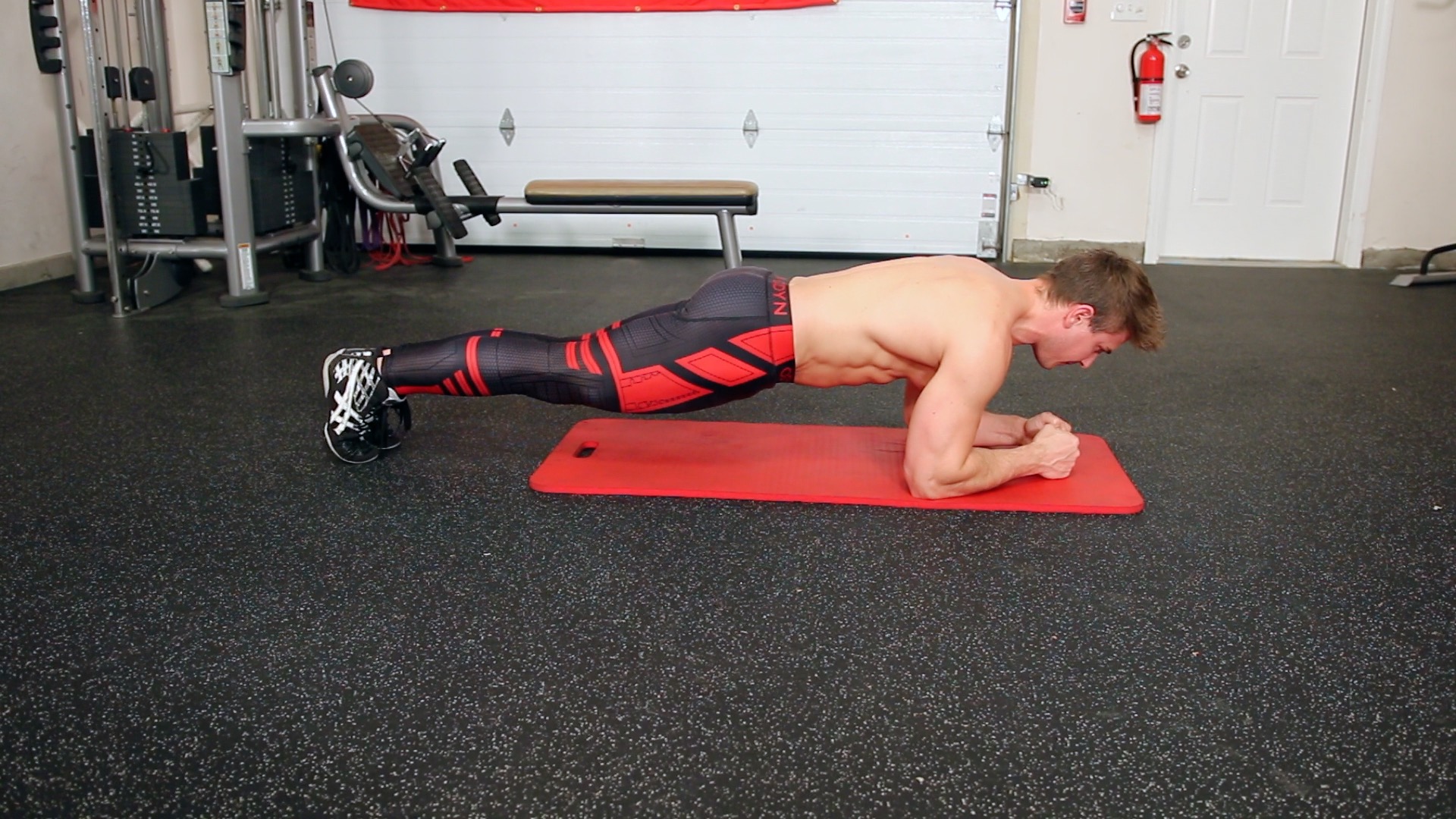
However, if you’re trying to have a contest to see how long you can hold the plank, what’s going to happen after probably the first 1-3 minutes is you’re not going to be able to keep all of those muscles flexed, you’re not going to be able to pull your elbows in towards your toes and vice-versa. After you’re unable to keep all these muscles flexed as hard as you can, how well the plank actually helps you increase your core stability starts to diminish over time. So quality over quantity! If you’re going to do a plank, keep everything nice and tight and flexed. As soon as you can’t keep it tight any more, (even though you still might be able to stay horizontal) at that point you’re better off just stopping, resting, and then starting another set.
Golden Rule #3: You Must Progress With The Movement!
As we just talked about with quality over quantity, once you’re able to do really strict planking, flexing all your muscles and keeping everything nice and tight, and you can hold that for 3-5 minutes max, then it’s time to try and make the exercise a bit more intense. Otherwise you’re just going to be sitting in the plank position for 8-10 minutes, when you could still be sitting in it for 3-5 minutes but making it a bit harder to get more out of the movement in less time. Let’s go over 3 variations.
Alt. Plank
For this variation, you lift one leg and the opposite arm, and hold it for as long as you can, before switching to the other leg and arm. Or, you can do that movement alternating repeatedly for as long as you can, instead of holding it statically.

T-Plank
With the T-Plank, you go onto your side so that you are only resting on one elbow (or one hand), while still continuously flexing your core.

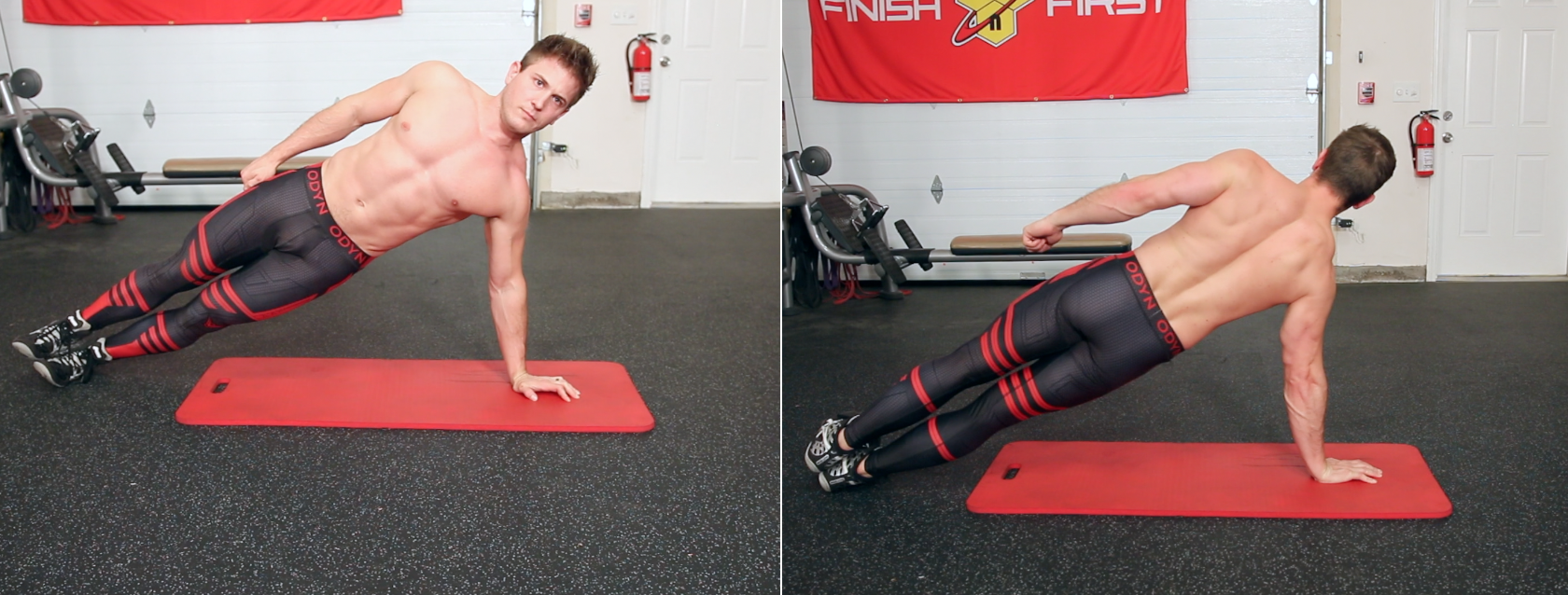
Weighted Plank
This is one of my favorite variations of the plank. It can be difficult to put weights on yourself, so maybe having somebody help you is a pretty good idea. But there are ways to do it on your own (you could fill a backpack and wear that, or just wear a weighted vest if you have one). The form for a weighted plank is the exact same as a traditional plank, except now you have weight added to your torso.

Bonus Tip For Beginners!
Whether you’re male or female, it’s quite possible to be too weak to perform a regular plank on its own. If that’s the case, don’t feel bad about it. We’ve all been there and instead of giving up and not performing the exercise, you can do an easier version of the plank, which is the KNEE PLANK, where you basically plank from the position of having your knees on the ground.
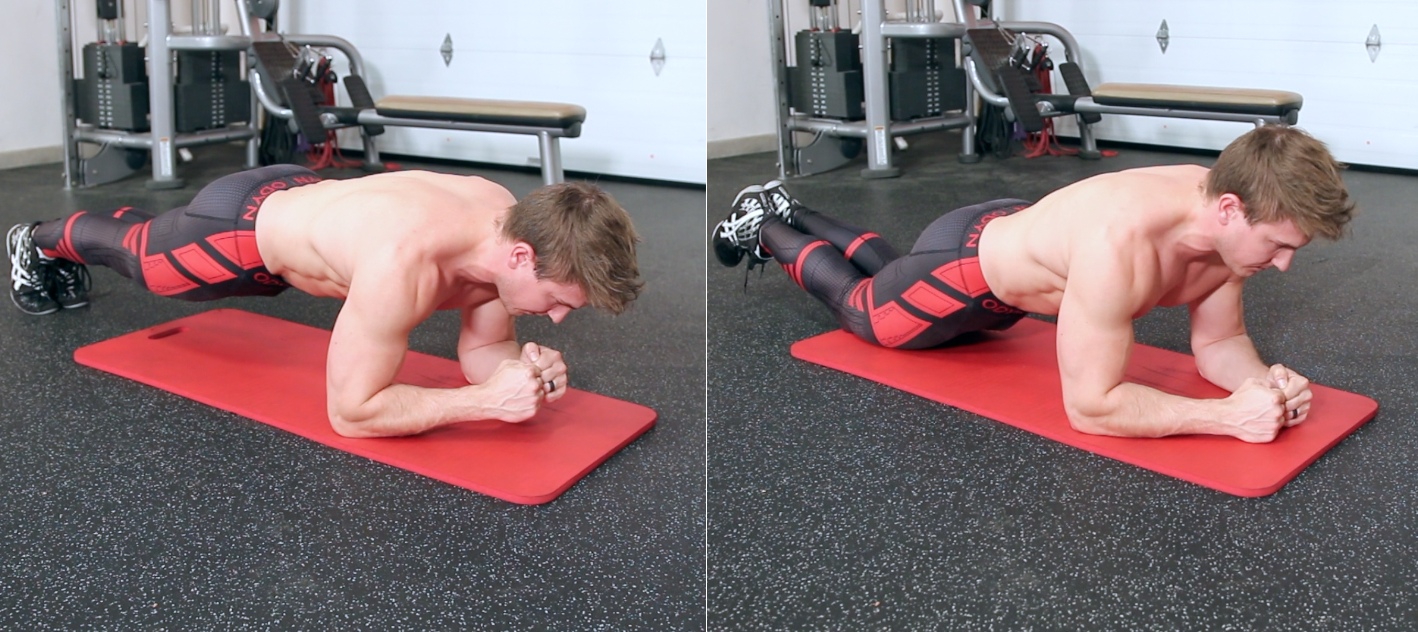
Also, if you can perform 5-10 seconds of a regular plank, and then you seem to collapse, that’s OK too. Just hang in there for those 5-10 seconds, and then continue for 30 more seconds on your knees. If you continue to do this, over time the regular plank time which was 5-10 seconds, will turn in to 10-15 seconds, then 15-20 seconds, and before you know it, you’ll be able to plank for 3-5 minutes EASY!
Conclusion
When it comes to training, whether it’s for bodybuilding, powerlifting, sports, or even just your day-to-day life, having a strong core is CRUCIAL! So if planks aren’t already part of your regular routine, try adding 3-5 sets of 1-3 minute holds onto the end of your ab workout, or just to finish off any workout in general.








